
Most people ignore that more than half of the stars in the night sky vary in brightness. It may seem strange to think that so many stars vary in brightness, but most of them only vary at a very low rate. Generally, it is undetectable by a human eye. Even our own sun is a variable star. Throughout its 11-year cycle, when the number of sunspots increases and decreases, the light the sun emits varies.
However, there are stars that have large variations in brightness. These range from stars of moderate brightness to stars that are only detectable with medium or huge telescopes.
What is causing this strange behavior? There are actually several reasons for this and depending on the type of variable stars. We can thus classify variable stars into groups. Some of these stars do not change brightness at the same speed. The brightness of some stars vary for a few days, others for several years, or even centuries.
Classification of variable stars
Eclipsing binary star
One of the types of variable stars is called eclipsing binary stars. These are two stars that orbit one another and, from our perspective, here in our solar system, they line up so that one of them passes in front of the other . Often there is one larger than the other, and when the smaller one passes in front of the larger one, the amount of light reaching us seems lower.
When the smallest star seems to disappear in front of the largest, the amount of light also decreases, but not as much. The most famous of eclipsing binary stars is Algol, in the Perseus constellation. These stars are too close to be seen individually by a telescope from Earth, but we know there are two stars in this system.
The video below is an artist’s impression of an eclipsing binary star system. As the two stars orbit each other they pass in front of one another and their combined brightness, seen from a distance, decreases.
Cepheid variable
There are other reasons why the brightness of some stars fluctuates. Some stars vary in size and then pulsate like a balloon that is filled with air and emptied. The best known are the Cepheid variables. They swell and shrink very regularly, so regularly that they can be used as a distance measuring device.
In 1912, the astronomer Henrietta Leavitt discovered that by comparing the luminosity of these stars with their period of variation of brightness, we could deduce the distance which separates them. Edwin Hubble used this observation to calculate the distance between us and the Andromeda galaxy.
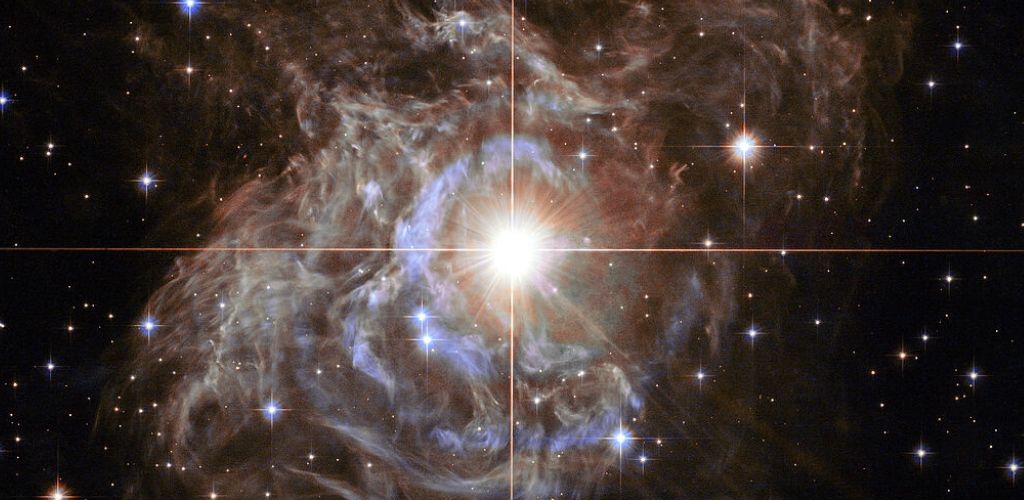
Mira variable
Variable stars can be classified into two main categories: short periods and long periods. A third group includes irregular and semi-regular variable stars which have no pattern in their variation in brightness. One of the star types in this category is called the Mira variable.
The name of this type of variable stars refers to the star Mira, or Omicron Ceti. It is a red, calm supergiant, which has widely spaced pulses which increase and reduce its luminosity. It has an approximate cycle of 332 days during which it experiences a dramatic drop in brightness, well below what we can see with the naked eye.
There are also stars similar to R Coronae Borealis which seem to disappear quite clearly at irregular intervals before returning to their original brightness. This is due to the composition of the external atmosphere of the star, made of carbon dust. When the dust disperses, the star regains its luminosity.
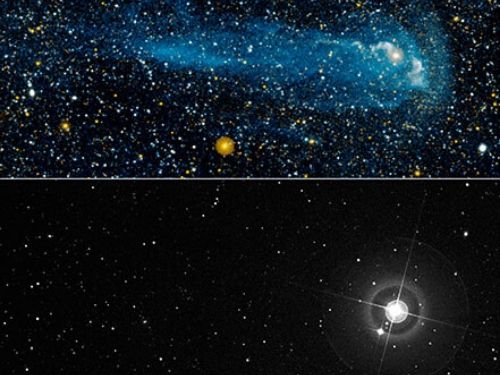
Mira in UV and visible light
Gamma Cassiopeiae
Among the other types of variable stars, there is the class Gamma Cassiopeiae, whose luminosity fluctuates because of the material ejected at the equator due to their rapid rotation.
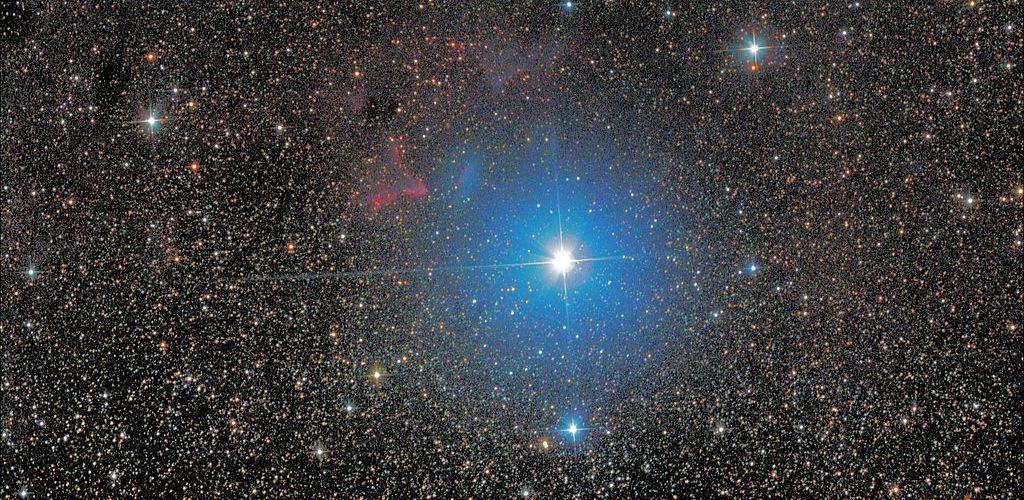
5 variable stars to observe in the night sky
Here is a selection of the different types of stars whose apparent brightness varies, seen from Earth. The observation of variable stars is a fascinating field of astronomy.
1) Mira
How to locate Mira: follow a line from Aldebaran in the Taurus constellation towards the Cetus constellation. A star map will help you. It is located approximately halfway between Eta Eridani and Alpha Piscium.
Also known as the wonderful Omicron Ceti, Mira is a giant pulsating star and is the brightest of the long-lived “red” variable stars. It has a period of 332 days, although its exact maximum is never predictable.
It has the greatest variation in luminosity of any celestial body that can be seen with the naked eye outside of our solar system. It is in the Cetus constellation and does not rise very high in the sky. The fact that it is in a sparse area in the sky can make it difficult to find.

Mira in UV and visible light
2) Delta Cephei
How to locate Delta Cephei: you can locate Delta Cephei in the easternmost lower corner of the Cepheus constellation.
It is a classic Cepheid variable star, with a cycle of 5.37 days. Stars like this pulsate at a period proportional to their luminosity and it is this ratio that allows astronomers to determine how far they are.
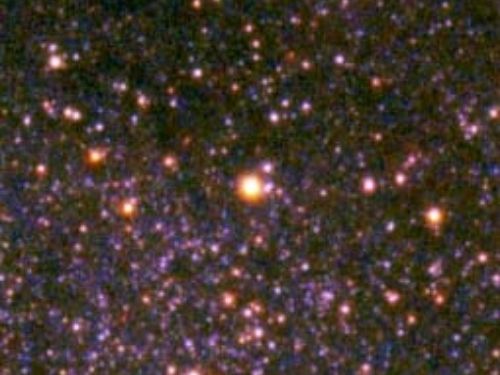
3) Algol
How to locate Algol: if you draw an imaginary line between the star Aldebaran in the Taurus constellation and the star Shedir or Alpha Cassiopeia, Algol is halfway there.
It is certainly the most famous of the eclipsing binary stars. Algol gave its name to this type of variable star. It has a double drop in brightness every 2 days, 20 hours and 49 minutes.
The second drop can be detected with electronic sensors because it is too small to be seen by the human eye. This second drop occurs when the smallest star passes behind or is obscured by the largest star.
Algol is one of the best pairs of stars to practice observing these fascinating objects.
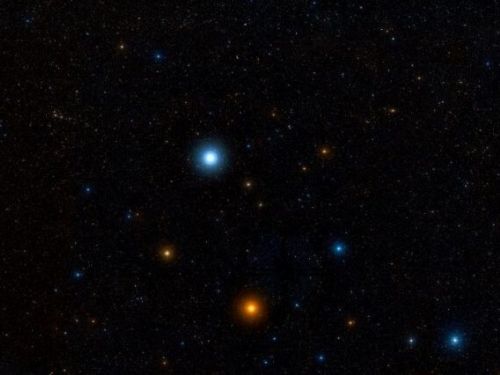
4) Gamma Cassiopeiae
How to locate Gamma Cassiopeiae: the Cassiopeiae constellation looks like the letter W or M, and is quite low in the sky in February. The middle star is “Gamma”.
The central star in the W of the Cassiopeia constellation is “Gamma”. It is a very hot and unstable star. Its brightness can vary randomly although it has not changed for more than 40 years. It should therefore change again soon!
We know that this star is a powerful source of X-rays. It is not dangerous for us, however, because Gamma Cassiopeiae is 550 light years away.
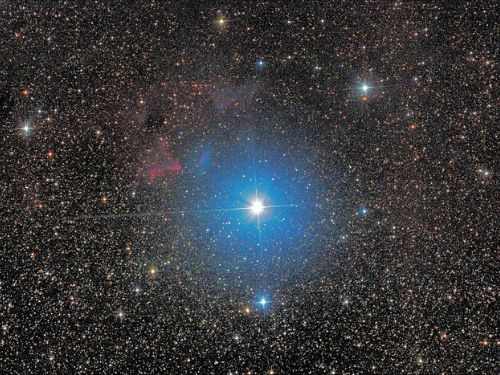
5) Betelgeuse
How to locate Betelgeuse: the Orion constellation is easy to find in winter in the Northern Hemisphere. Betelgeuse is the star above and to the left of the Orion belt.
This bright orange red star is located at the top left of the Orion constellation. Most people are unaware that this star is unstable and varies in brightness, however quite weakly.
Its brightness drops and rises quite slowly over a period of about 6 years. It is believed that in the next million years Betelgeuse should explode as a supernova. And it will be worth seeing. In fact, we should even be able to see it by day, for a short time.
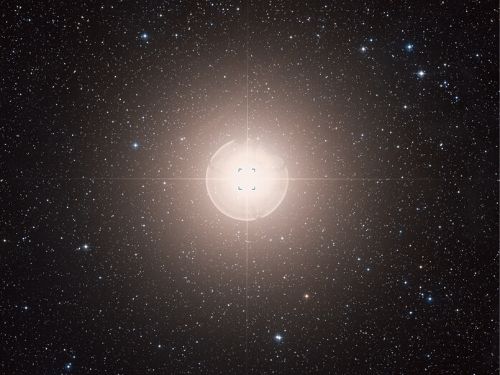

- Images credits:
- Eclipsing binary star: ESO/L. Calçada / CC BY (https://creativecommons.org/licenses/by/4.0)
- Cepheid variable: NASA, ESA, and the Hubble Heritage Team (STScI/AURA)-Hubble/Europe Collaboration Acknowledgment: H. Bond (STScI and Penn State University)
- Mira: NASA/JPL-Caltech/POSS-II/DSS/C. Martin (Caltech)/M. Seibert(OCIW) / Public domain
- Gammae Cassiopeiae: Neil Michael Wyatt / CC BY (https://creativecommons.org/licenses/by/4.0)
- Delta Cephei: No machine-readable author provided. Rafael cercedilla assumed (based on copyright claims). / CC BY-SA (http://creativecommons.org/licenses/by-sa/3.0/)
- Algol: Wikisky
- Betelgeuse: ESO, P.Kervella, Digitized Sky Survey 2 and A. Fujii / CC BY (https://creativecommons.org/licenses/by/4.0)